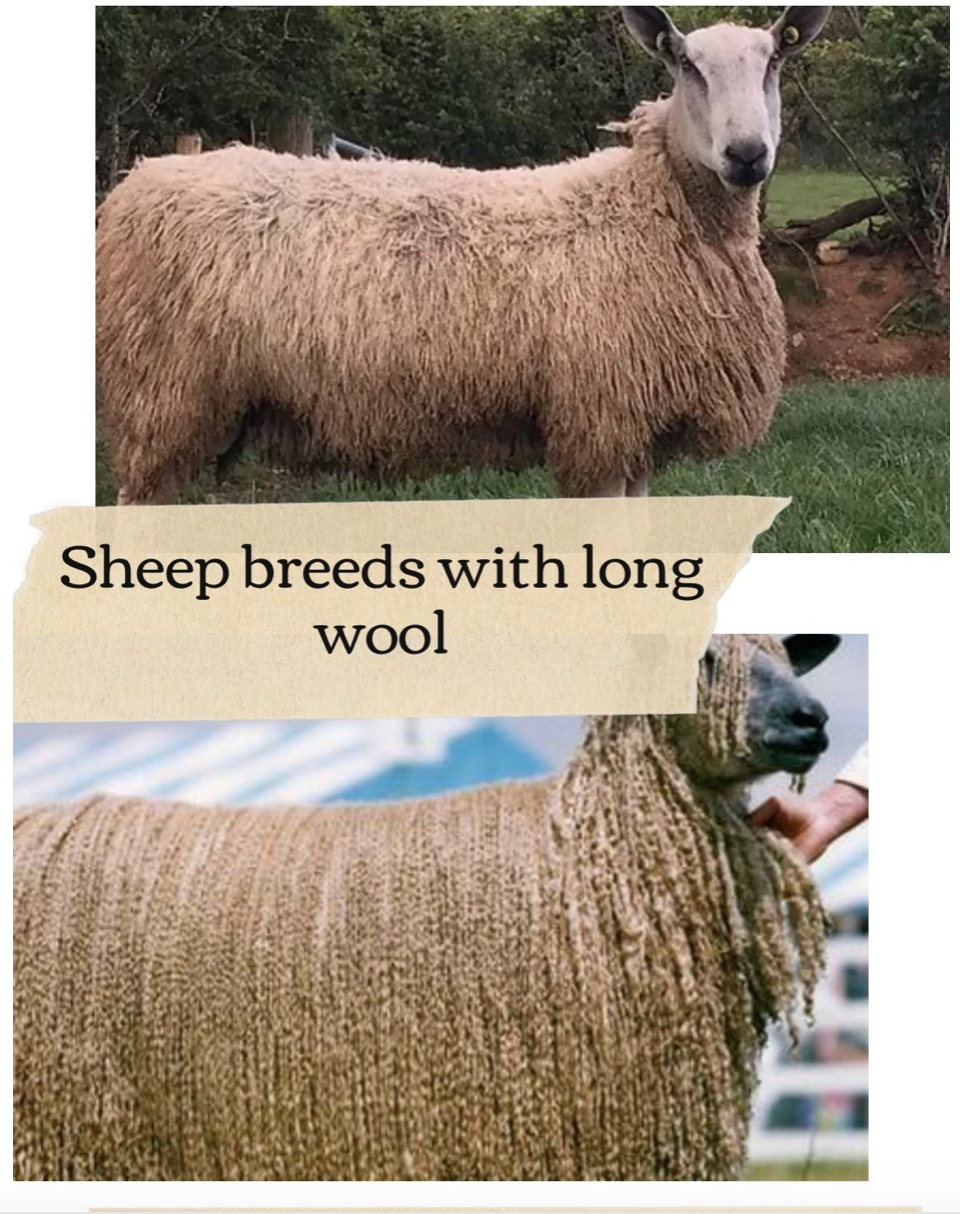Sheep Breeds with Long Wool
Introduction
The sheep breeds with long wool are perfect for spinning, lock-spinning, art yarn and lace work. They produce amazing yarn that can be used to create sweater and socks!
Wensleydale
The Wensleydale is a white-faced, long-wool breed originating in the Yorkshire county of North Yorkshire, England. A medium-sized sheep that was crossed with other breeds to produce the Dalesbred and Swaledale, it is known for its high quality wool. The breed has been exported to many countries around the world including New Zealand and Australia where it has adapted very well to varying environments.
Wensleydales are white or cream colored with black faces and legs (and sometimes a black tail). Their fleece is long and crimped or curled which makes it easier to spin into yarns for knitting or weaving. They are smaller than other long wool breeds such as Merinos or Targhees though they still produce exceptional amounts of wool per year—upwards of eight pounds!
Cotswold
The Cotswold is a large breed of sheep with long, soft and curly fleece. This breed was created in England by crossing Leicestershire sheep with Southdown and Teeswater breeds to create a hardy, white-faced sheep that produces high quality meat, milk and wool. The Cotswold is known for having an excellent temperament and produces high quality meat on grass alone—they’re one of the few breeds that are self-reliant when it comes to feeding themselves. They’re also good for producing milk, though they do not have as much capacity as other dairy sheep breeds.
Teeswater
The breed is a mid-sized sheep, with rams weighing an average of 70 to 80 pounds and ewes averaging 50 to 60 pounds. They have a long, silky wool that can grow up to 20 inches in length. The fleece has a high degree of crimp and is generally white or light colored, though some animals may be grey or brown.
Teaswaters are known for their hardiness and ability to thrive on poor quality grazing land; they are also resistant to foot rot, which makes them popular among farmers who raise sheep for meat or fiber.
Lincoln Longwool
The Lincoln Longwool is a medium-sized breed of sheep. It has a long, lustrous fleece with a crimp pattern and a very good luster. The wool is white or light gray in color and may have some brown tipping on the tips of the fibers. The breed originated in England as early as 1813, but it was not officially recognized until 1855 by the Royal Agricultural Society.
Lincoln Longwoollies are known for being easy to care for because they are hardy, docile and have few health issues (in comparison with other breeds). They also make excellent mothers, with many ewes raising twins or triplets! This makes them an ideal choice for beginning farmers who want to keep their livestock numbers low.
Border Leicester
The Border Leicester is a dual-purpose breed with long, lustrous wool. It produces large numbers of lambs and has excellent fertility. The ewes have strong maternal instincts and good mothering ability. They are also hardy and docile, making them popular in crossbreeding programs.
The head is broad with no horns and medium-sized ears that are slightly pointed at the tip. They have a wide muzzle with well-developed nostrils, large eyes set toward the sides of their heads, thin lips that close tightly around incisors that protrude beyond the gum line when they chew cud; they eat grasses as well as browse (woody vegetation).
Their body is long but not too tall (for easy access to food). The rump slopes downward from shoulders to hips so that when sitting down it appears flat from behind - this prevents lice in sheep's wool from hiding between body parts where there isn't much movement for grooming purposes like leg hairs might provide for other animals such as cats! The chest is deep but not too wide; this enables greater lung capacity for more oxygen usage during periods when temperatures may drop suddenly during winter months (high altitude climates) which could lead towards death if affected negatively enough."
A few breeds of sheep have long luxurious wool that is great for lock spinning, art yarn and lace work.
Wool is the fiber produced by sheep. Wool has been used for thousands of years to make yarn, clothing, blankets and rugs.
Wool is a natural insulator. It helps keep you warm in the winter and cool in the summer.
Wool is used to make yarn for knitting and crocheting (as well as other types of handwork like latch hooking). Wool can be made into many different weights such as sport, dk (light worsted), worsted and bulky. Bulky weight yarns are great for cozy scarves or even sweaters!
Free Fiber Arts Content
Welcome to our free library of fiber arts education! Dive into a world of creativity and learning with a wide range of resources covering knitting, crochet, spinning, dyeing, and more. Whether you're a seasoned fiber artist or just starting out, our collection is designed to inspire and educate. Explore new techniques, discover tips and tricks, and unleash your creativity with our carefully curated content. JoiWelcome to our free library of fiber arts education! Dive into a world of creativity and learning with a wide range of resources covering knitting, crochet, spinning, dyeing, and more. Whether you're a seasoned fiber artist or just starting out, our collection is designed to inspire and educate. Explore new techniques, discover tips and tricks, and unleash your creativity with our carefully curated content. Join our community of passionate fiber enthusiasts and elevate your craft to new heights. Happy creating!n our community of passionate fiber enthusiasts and elevate your craft to new heights. Happy creating!



